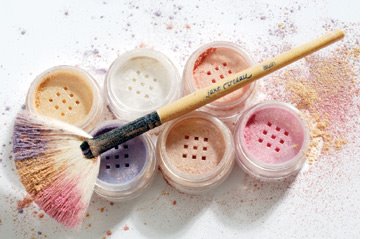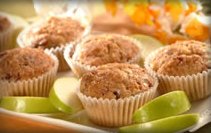Is your appetite harder to control in cold weather? Find out why cold weather makes us hungry – and how to cope. - Colette Bouchez For most of the US, the weather outside is just frightful . But the food inside ...delightful!
For most of the US, the weather outside is just frightful . But the food inside ...delightful!
If that's the tune that's been running through your mind these days, you're not alone. As temperatures plummet experts say our appetite increases – and so can our waistline.
"Studies indicate that we do tend to eat more during the winter months, with the average person gaining at least one to two pounds – and those who are already overweight likely to gain a lot more, ” says Rallie McAllister MD, family practice medicine specialist from Lexington, Kentucky.
But what is about falling temperatures that urges us to eat more?
One reason is that food performs the simplest of winter functions: It helps keep us warm.
"Simply put, when outdoor temperatures drop, your body temperature drops and that is what actually sets up a longing for foods that will warm you quickly,” says Kristin Herlocker MS, RD, a nutrition expert with Diabetes Centers of America in Houston, Texas.
In short she says shivering triggers a self preservation mode that sends our body a message to heat up fast! And while technically, any food – including fruits and vegetables - will boost our metabolism and help create the extra heat we crave, for most folks it’s the traditional comfort foods that come to mind when it’s cold.
“When our body gets cold our brain hears ‘ Bring on the Mac & Cheese’ – it’s partly cultural, partly conditioning and partly just an excuse to eat more of the foods we really love,” says Barrie Radbill, MS, RD, a New York City nutritionist.
The Dark Days Of Dieting
While for some it's the falling temperatures that set their appetite in motion, for others it's the decrease in sunlight that increases the need to feed. The reason is a brain chemical dysfunction known as SAD or seasonal affective disorder – a type of depression that occurs in a response to a lack of sunlight. So what’s the link to an increased appetite?
“People who are affected with SAD have lower blood levels of serotonin – not surprisingly, those carbohydrate-rich foods give us a serotonin rush, so for many people winter food cravings are a way of self-medicating - as the days get shorter the need for these ‘carbo-rich comfort foods’ increases,” says McAllsiter.
Moreover, experts say that the early winter sunsets combined with the cold weather means many folks simply stay indoors more this time of year – and that often means we feel isolated and, usually more hungry.
Complicating matters further : Winter often provides lots of excuses for moving less. Not only do shorter days and colder weather cut our outdoor time by several hours –- in many locations the temperatures, as well as other weather related factors like snow and ice, make our chosen fitness activities, like walking or running, more difficult.
Since exercise helps increase serotonin levels, McAllister says the lack of activity can have a direct influence on how much we eat.
"If we're eating more and working out less, there's no place for our weight to go but up!" she says.
Taking Control of Your Winter Appetite: What To Do
While cold winter weather may be encouraging us to eat more, experts say we don’t have to lose control of our appetite in the process. Here are 5 ways to get some winter comfort without packing on the extra pounds.
1. The colder the temperatures the more you need to snack . But if you make it a high protein, high fiber snack you’ll rev up your body’s heat mechanism quickly and remain warmer longer. And that means you’ll not only burn more calories, you’ll also have a less of a drive to eat more often.
2. Create Low Cal Comfort Foods – If you know that nothing take the chill off your bones like comfort food, look for ways to cut the calories and still get that warm and cozy feeling. Try a bowl of vegetable soup instead of a high fat chicken noodle, make your cocoa with non fat milk, try Mac & Cheese with no-fat cheese – be creative in finding ways to make feel-good food less fattening.
3. See The Light – If you definitely find yourself more hungry on dark, gloomy days talk to your doctor about light therapy.. It’s a way of using artificial light to increase serotonin levels – and reduce your appetite.
4. Exercise Your Daily Life – If you can’t outside to do your regular workouts – or even if the weather keeps you from getting to the gym – put more activity into your daily living. Take the stairs instead of the elevator, march in place while you’re sorting the laundry or doing the dishes, or clean out the closet/basement/garage instead of curling up with your favorite DVD movies every night. The more you move the warmer you will feel and the less hungry you will be.
5. Give out a lot of hugs. If it’s comfort you’re seeking, our experts say hugging is a great way to fill you up without filling you out. Instead of turning to comfort food to feed your winter appetite, hug your kids, your spouse, your dog or cat – or visit an orphanage or senior center, where hugging is a premium! You’ll feel warm and fuzzy all over- and you’ll eat a lot less!
In addition to US Copyright, the text of this RedDressDiary article is licensed under a Creative Commons Attribution-ShareAlike 3.0 License. All formatting and style elements of this page are not available under this license, and Colette Bouchez retains all rights in those elements.







































